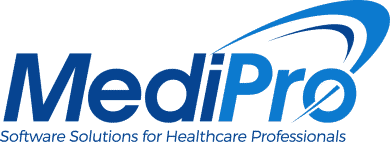Are you considering investing in an EHR/EMR this year, but aren’t sure if switching to a new system is worth the hassle? Are you concerned that the transition will not actually improve your medical office workflow, but rather will be a burden on your staff?
To answer these questions, we checked out studies on the usage of electronic medical records, including Medical Practice (MP) software.
One national survey of over 4500 medical practices revealed that 79 percent of the participants that had adopted an EHR/EMR reported an improvement in overall office workflow and efficiency. Reported enhanced workflow was attributed to the following improvements:
Streamlined Check In/Check Out Process
Office staff members report the benefits of patient self check ins, instantaneous delivery of billing information, and rapid appointment scheduling, all of which are facilitated by an effective EHR/EMR. When these tasks are automated, office staff is freed up to deal with actual patient problems and to provide a warm personal experience.
Enhanced Availability of Information
Of the practices surveyed, 91 percent reported that the change made medical records readily available at the point of care. The nurse can easily access information at the same time the physician is reading up on the patient’s history and reason for visit. History notes are easy to scan and summarize, and prescription medicine usage is easily updated and communicated. Visit summaries can be printed and handed to the patient, or emailed to the client through secure, HIPAA-compliant patient portals.
More Efficient Charting
Electronic chart creation eliminates the need for paper charting and the associated time and paper waste. No more physical filing, which requires time, effort, space and supplies; no more lost charts, illegible documentation or improper coding. A good EHR/EMR will prompt and autofill information, streamlining and enabling more comprehensive documentation, including automatic referral letters and post-visit care instructions, both of which can be initiated through a few clicks.
Fewer Errors
A study referenced in Medical Economics Magazine concludes that downcoding, coding errors and improper claim filing cost clinics anywhere from $40,000-$50,000 a year. If you also calculate in the human hours spent correcting errors, those numbers grow even further. A good EHR/EMR reduces coding errors, which will be increasingly important as the ICD-10 coding changes go into effect and the focus on proper coding escalates even further.
Faster Lab Results and Communication
When you can communicate lab results in a click of a button, everyone benefits. Further testing needed? The patient can be notified and the appointment process initiated. Lab results totally normal? Want to deliver an entire panel of results to the patient? Deliver it instantaneously through a secure patient portal. It’s no surprise that 75 percent of the practices surveyed said their EHR/EMR improved the speed of lab result delivery. Seventy percent also reported that they felt the confidentiality of communication was also improved.
E-prescribing Time Savings
E-prescribing is easier for your office, and for patients, who no longer have to physically deliver a physical prescription to the pharmacy. Patients receive their meds sooner and with less hassle, and your office will see a reduction in lost scripts, improper script interpretation and calls for refills. In fact, 82 percent of practices surveyed reported e-prescribing saves time.
Overall Conclusions
In summary, medical practices are reporting that they see workflow improvements once the EHR/EMR is adopted and the transition period completed. In fact, 70 percents reported that they felt the EHR/EMR made it possible for physicians to provide better care for their patients overall. When quality of care and office workflow both improve, medical practices flourish.
The Hurdle: Getting Through the Transition Period
The largest hurdle to overcome is the transition period, during which paper records are transcribed to electronic files, and staff is trained in on the new software and procedures. However, this short term pain period is far outweighed by the long term workflow and quality of care improvements.
MediPro, Inc. is a full-service medical billing software company offering practice management (PM) software, electronic health records (EHR) and electronic medical records (EMR) from McKesson and IMS.
Since 1995, MediPro, Inc. has been a nationally recognized, award-winning medical billing software company offering practice management systems and electronic health record solutions. MediPro’s mission is to deliver and support integrated solutions to the healthcare community. MediPro Inc. recognizes the need for a comprehensive, interactive and cost-effective suite of applications that are customized to address the specific needs of healthcare offices.
